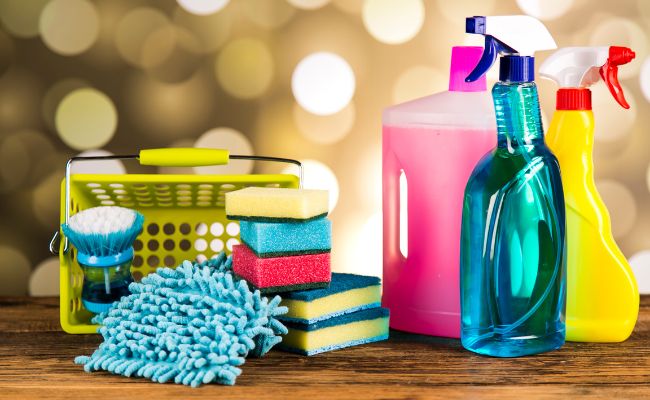What Ought to You Dry on Low Warmth vs. Excessive Warmth? Your No-Fail Information
You understand that tumble dryers have totally different cycle settings, however are you positive which dryer settings are right for particular clothes objects? Is it ever a good suggestion to dry garments on excessive warmth? These are nice questions with less-than-straightforward solutions.
Each dryer’s settings would possibly look barely totally different primarily based on the producer (everlasting press, steam dry, delicates, timed dry, and so forth). Every has a unique temperature and cycle time. Whereas the dryer setting you select depends upon the machine and materials, these cycles are important to protecting laundry feeling its greatest. Right here’s easy methods to use the warmth settings to your laundry’s benefit.
What Can Dry on Excessive Warmth?
Sometimes, settings with excessive warmth temperatures are the common ones, like “regular,” “timed dry,” “automated,” and “cotton.” Relying on the equipment’s make and mannequin, excessive warmth temperatures can vary from 140°F to 150°F. Excessive warmth is usually the default setting, so keep in mind to manually modify the temperature if wanted earlier than beginning a cycle.
Towels and heavy work garments are normally protected to dry within the dryer at excessive temperatures. Athletic put on, comparable to sweatpants, sweatshirts, and sheets, can also be typically protected to dry on excessive warmth.
Nevertheless, some objects shouldn’t be dried on excessive warmth or put within the dryer in any respect. Delicate or heat-sensitive materials, like lace, leather-based, and wool, might be broken by excessive warmth. For instance, sequins or clothes with iron-on decals ought to air-dry. All the time learn the garment label to make sure the merchandise is dryer-safe earlier than placing it in for a cycle–whether or not excessive or low warmth.
What Can Dry on Medium Warmth?
Medium warmth normally corresponds to the “everlasting press” possibility, with temperatures starting from 130°F to 135°F. Everlasting press is good for wrinkle-prone objects as a result of drying them at barely decrease temperatures prevents creases from setting in.
Everlasting press or medium warmth is appropriate for many on a regular basis clothes objects (delicates and sure materials apart), comparable to blouses, clothes, T-shirts, child garments, skilled clothes, slacks, outerwear, and jackets. Medium warmth works nicely for artificial fibers like polyester and nylon. Sometimes, on the finish of a everlasting press cycle, the dryer sucks in cooler air (or room temperature air) to chill out lingering wrinkles on the garments.
What Can Dry on Low Warmth?
Low-heat temperatures can vary from 120°F to 125°F, which correspond to “delicate” or “light” dryer settings. Bear in mind, decrease temperatures additionally imply longer drying instances.
Many dryers even have no-heat choices, comparable to “air dry” or “air fluff” cycles. These settings can fluff up textiles like blankets or space rugs or take away mud and lint from clothes.
These low-to-no warmth settings forestall injury from excessive temperatures within the drying course of. They’re ideally suited for delicate, dryer-safe objects and high-performance supplies like waterproof or fireproof clothes.
Objects with beads, embroidery, sheer materials, lingerie, knit or loosely woven garments, and a few lace or silk objects are higher air-dried. For these defending their denim, denims will also be dried at low temperatures to remain sturdy. They will stand up to excessive warmth drying temperatures however might shrink. Sneakers will also be dried on no warmth settings to stop rubber or plastic from warping.
When Ought to You Change the Warmth Settings?
To sanitize objects, set the dryer to a excessive temperature to kill germs and micro organism. Newer dryers may need a “sanitize” or “steam sanitize” setting. A everlasting press setting received’t fully take away wrinkles from materials, however it could cut back wrinkles and pilling.
Scorching dryer temperatures could cause darkish clothes to switch coloration to mild or white objects. This may be helpful if you wish to dye clothes. Nevertheless, if whites and colours are combined within the laundry, dry them on low or no warmth. Some newer dryers may need particular settings, comparable to “whites” or “colours or darks,” to supply useful hints on drying separated laundry. Keep in mind that the dryer temperature ought to primarily be primarily based on the material or materials.




:strip_icc()/GettyImages-171265514-2d0ad33a718743a3b90512319ad2e977.jpg?w=1200&resize=1200,0&ssl=1)
:strip_icc()/GettyImages-1410017429-06b0aa6c53bf4434a896c894220c0944.jpg?w=1200&resize=1200,0&ssl=1)
:strip_icc()/GettyImages-2171236071-9ca2710016704309a60f9228201c2782.jpg?w=1200&resize=1200,0&ssl=1)